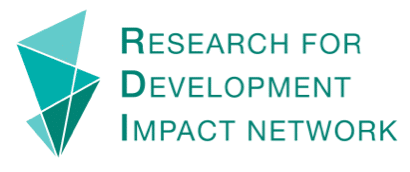Developing and maintaining constructive relationships with funding bodies is important for the ongoing sustainability of international development work, including research and evidence based programming. You will need to identify the donors best suited to your work, understand your donors, find ways to influence their decisions and arrangements to best serve the interests of the communities you work with, and keep them engaged and committed to your work long term.
- Segment donors
Segmentation means categorising funding organizations according to a number of characteristics. It could be their needs, the strength of your current relationship, the level of funding or potential funding, or their organisational type. This helps tailor your work accordingly, and prioritise which to work with. Matching these donor segments with your beneficiaries or those you serve most closely, is also a great step.
- Identify your overlapping interests
Before launching a new partnership or pitching to a potential donor, understand what the shared opportunity is. Which similar goals could you tackle together that would be harder to achieve independently? Finding the alignment in the impact you want to achieve, and how the rewards and risk can be split, will be a vital exercise for making new partnerships and maintaining current relationships.
- Understand the donor environment
The type of funding organisation and where it is located can affect how they function and how you can engage with them. A philanthropist in the USA, a multilateral agency based in Nigeria, a managing contractor in Australia, or an international non-government organsiation in Indonesia, will each be set up in a particular political, cultural, and economic environment. Understand what their drivers and assumptions about effective development are, their vision and priorities over the coming few years, the key people involved, along with the practical timelines and planning cycles they follow. This will feed into how and when you approach the donor.
- Be aware of the risks and challenges in donor relationships
Recipient countries have previously cited donor driven priorities and systems, difficulties with donor procedures and uncoordinated donor practices as some of their top challenges in receiving funding. These are similar to challenges all recipient organisations have, and planning for them will be important for your ability to deliver and remain sustainable.
- Establish clear arrangements
There are a number of best practice guides to be found on establishing partnerships. One of the most common lessons is the importance of having a shared understanding of roles, responsibilities, and decision making processes (which hopefully take into account decolonial thinking).
- Create regular communication and engagement channels
Agree to a certain regularity and type of communication, and have clear responsibilities about who should provide these updates and facilitate the discussions. Some of them may be around co-design, while other time to connect will be for updates. While formal monitoring, evaluation and reporting requirements are likely to be codified in any agreement, the informal feedback loops and communication will allow for programs to be finessed as you go.
Read full articles
- Bridging the development partnerships gap (Guide, 60 mins)
- Donor relationship management (Toolkit, 3 mins)
- Harmonising donor practices for effective aid delivery (Report, 2.5 hours)



